Catalonia Art & Culture, Beaches, Cities, Countryside, Food & Wine, Sport & Adventure
Pedalling the Costa Brava’s gourmet heartland
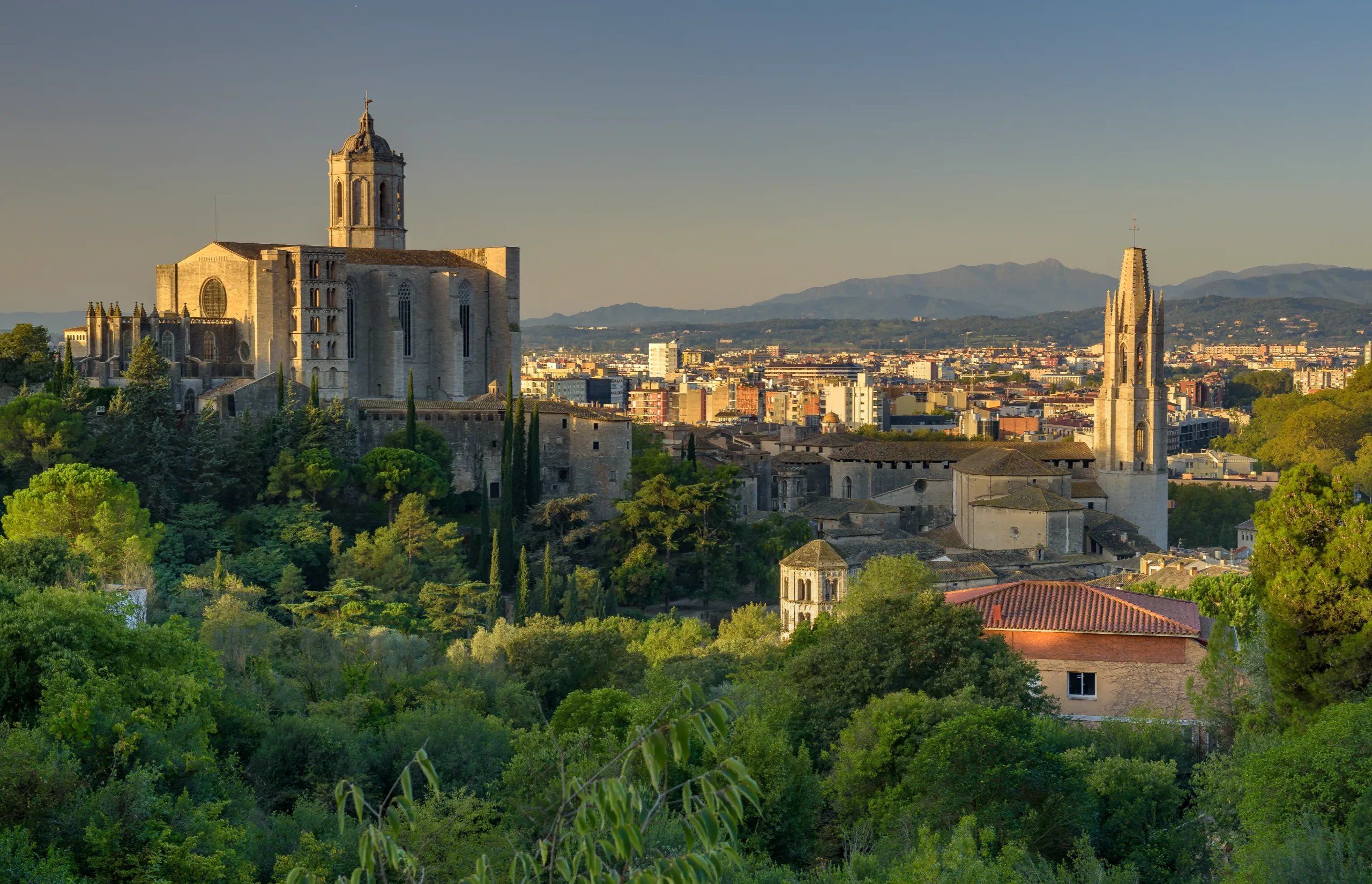
Catalonia | Costa Brava | Cathedral in Girona City
Cycling between medieval hill towns, golden fields and Michelin-starred restaurants, this Costa Brava journey reveals why Catalonia – 2025’s World Region of Gastronomy – is best explored on two wheels
When you are travelling through 2025’s World Region of Gastronomy, Catalonia – and more precisely, the province of Girona, which has no less than 15 Michelin-starred restaurants and 30 wineries along its DO Empordà Wine Route – it pays to be doing so by bicycle.
For every sugar-crusted Xuixo pastry and oozing Crema Catalana that we snack on, for each glass of cool white Macabeu wine and hearty fish stew we consume, there’s a one- or two-kilometre pedal along quiet country lanes.
It is even better if the velocipedes you are riding are E-bikes, like those helping my teenage daughter and I to coast up the occasional undulation in the Baix (lower) Empordà, on this week-long UTracks ‘Catalonia by Bike’ self-guided tour.
While the cycling – which links the medieval villages of Monells and Peratallada in the Costa Brava hinterland with the Mediterranean shoreline’s beautiful coves and fishing hamlets – is minimal, journeying on two power-assisted wheels allows us to absorb the detail in the the Tuscany-like landscape.
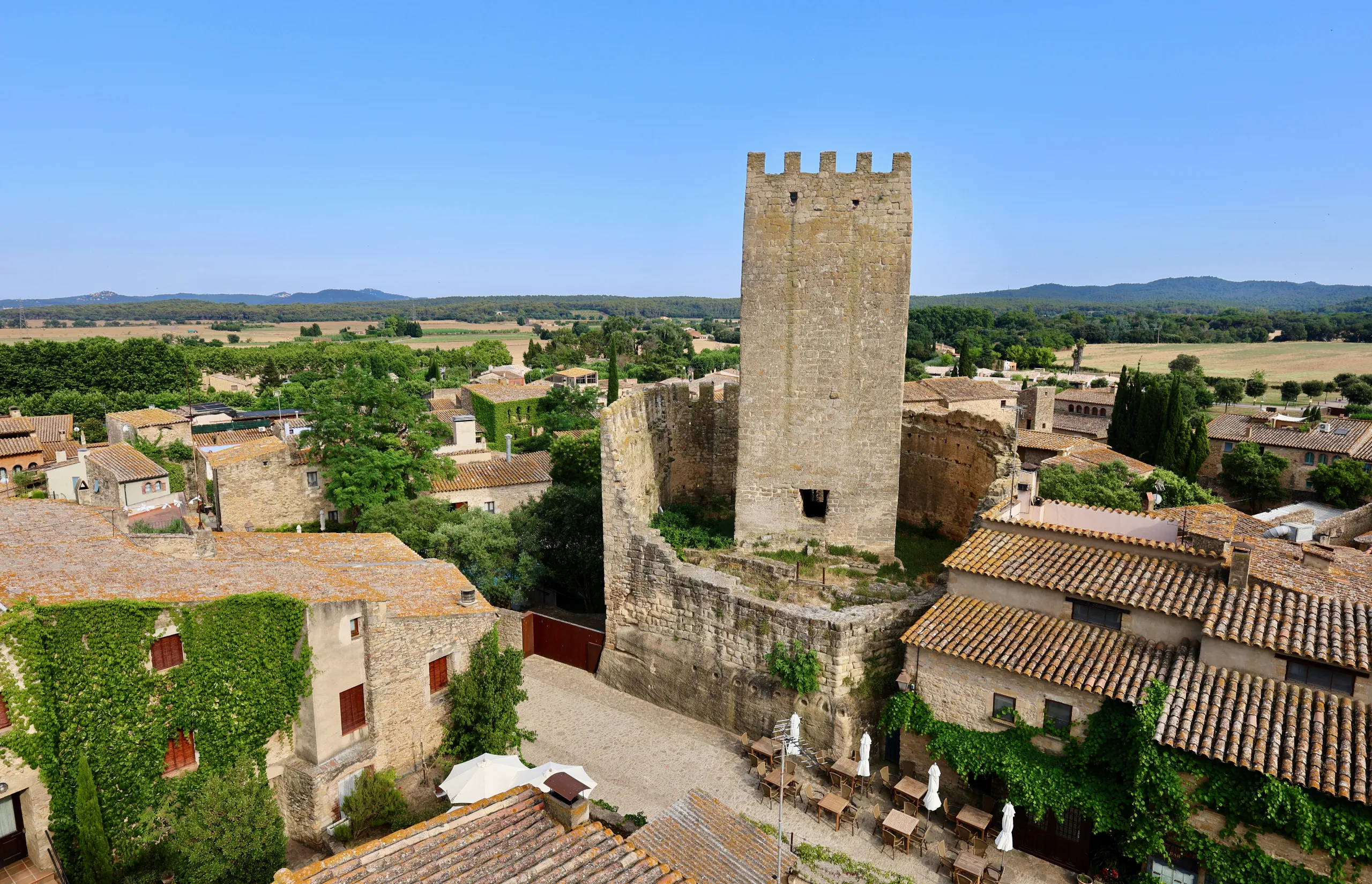
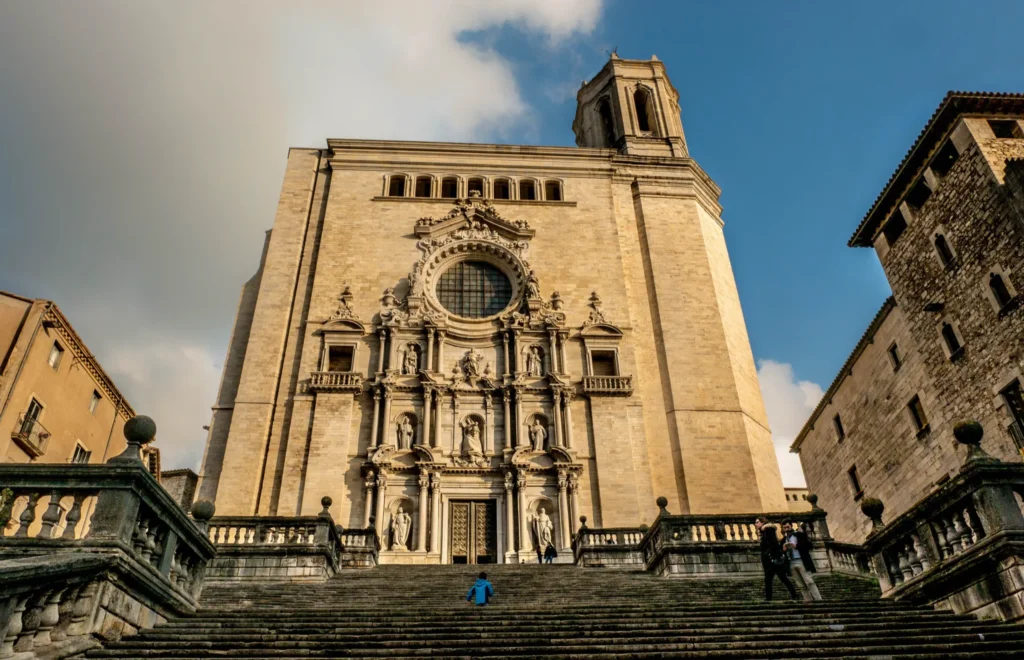
From fragrant pine forests, past stands of imperious Cypress trees and conifers first planted by ancient Iberian farmers as windbreaks, through fields ablaze with brilliant yellow sunflowers with shimmering hilltop hamlets ever-present in the distance, this is a consistently visually splendid ride.
It wasn’t until 1908 that the name Costa Brava was first coined by Girona-born journalist Ferran Agulló. Thereafter its rugged natural beauty drew artists like Chagall, Picasso and Dalí, and the coast was earmarked for tourism development in the 1960s, when the name was widely adopted.
From medieval villages to Mediterranean coves
Our scenic journey begins in Monells, bedding down for our first two nights in a restored 14th century hospital and farmhouse, the Hotel Arcs de Monells. In this family-run boutique property the medieval shell has been artfully modernised to accommodate 21-air-conditioned rooms, including three suites, grouped around a glinting swimming pool and beautifully kept gardens. Its much-travelled owners Josef and Sandra Serramia have created the sort of haven they would want to stay in themselves, and they are invariably on hand to offer advice or to concoct generous cocktails at the bar.
Just as the hotel combines ancient and modern, so its excellent on-site restaurant Monki fuses two cuisines, Catalan and Asian, with sensational results. At breakfast, it is more local in flavour, with an inviting spread of cured meats, tangy regional cheeses, artisan bread and pastries. At lunch, it morphs into a sushi bar drawing on this area’s excellent seafood, with unexpected delights including the Gynza, uramaki with tempura squid and avocado, topped with local Palamós shrimp and salmon roe.
At night, while my daughter tucks into Bravas Monki, a variation on the well-known spicy potato tapas dish, with kimchee mayonnaise, and Bao Tacos with calamari, I feast on Iberian pork jowl Gyozas with teriyaki glaze, followed by duck breast with soy and honey-marinated shiitake mushrooms and feisty Osaka sauce.
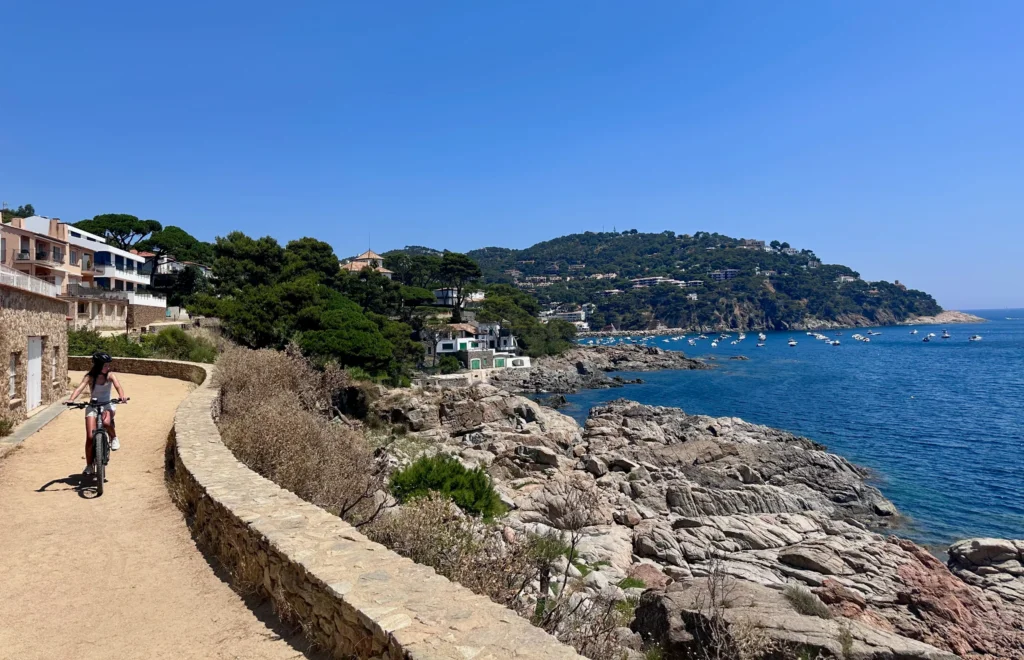
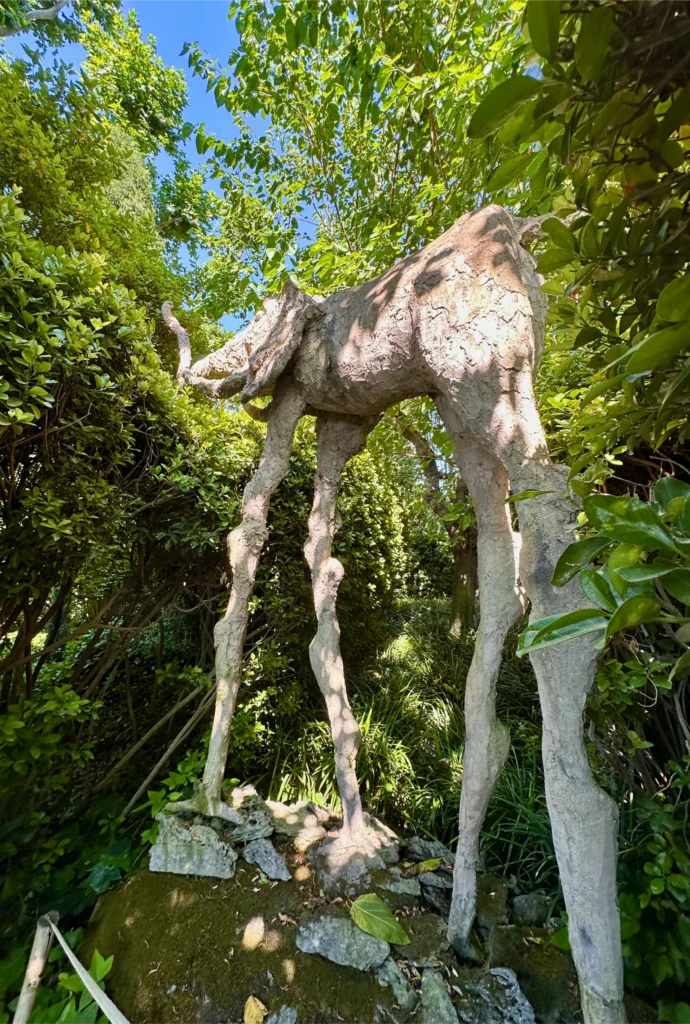
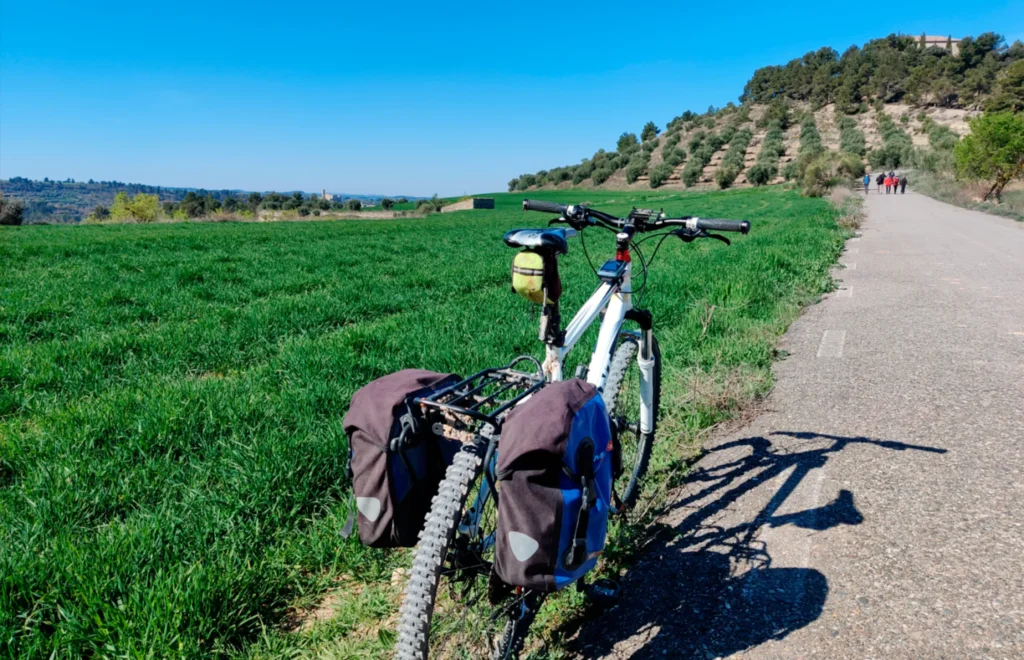
It’s just as well we have plenty of activity on the agenda to counter all that indulgence. It begins with an easy 31-kilometre loop, which takes us uphill out of Monells (thank you e-bike “boost” mode) toward the neighbouring village of Madremanya, seemingly unchanged since its medieval origins.
We then reach Púbol, where we explore the Gala Dalí Castle, the first of this region’s three Salvador Dalí landmarks. The surrealist artist dedicated the Gothic-Renaissance castle to his wife and muse, Gala, who died seven years before him. It’s worth taking time to savour the eccentric genius of this place, where Dalí kept his final studio and where curious touches – from a mannequin of a horse to long-legged elephant sculptures – emerge unexpectedly from the gardens.
The next day’s cycling is even more leisurely than the first, just 26 kilometres through woods and flat farmlands to Peratallada, while our luggage has between transferred to. Staying right in the core of this walled 11th century village feels like a privilege – we stroll out of our charming hole-in-the-wall hotel and straight onto cobbled passageways. As the heat of the July days diminishes, we climb the central Tower of the Hours with its regularly tolling town clock. At the top, we drink in captivating views over the sunbaked countryside and graze on tapas al fresco in the Plaça de les Voltes, before browsing the boutiques secreted in the surrounding arcades.
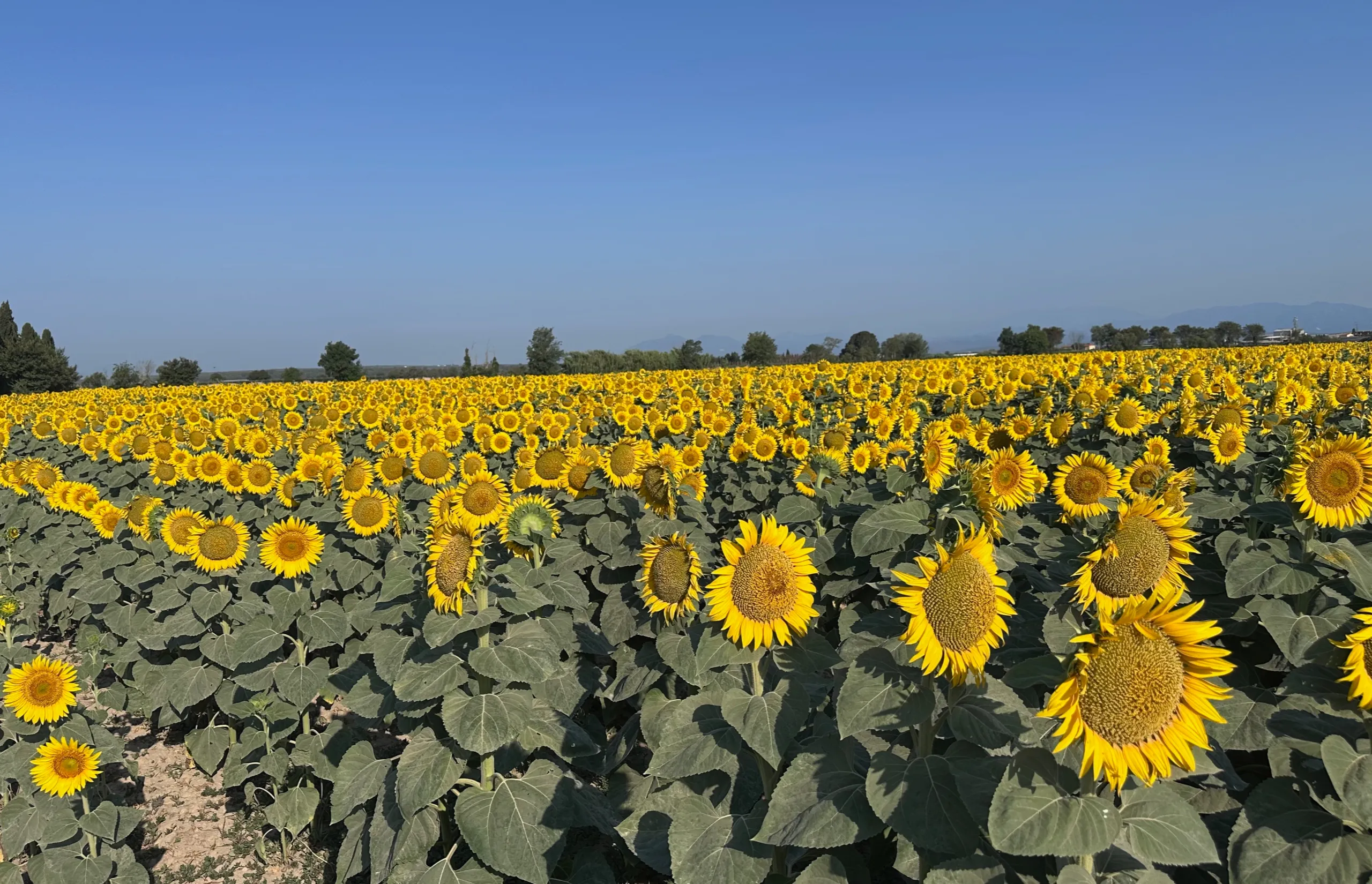
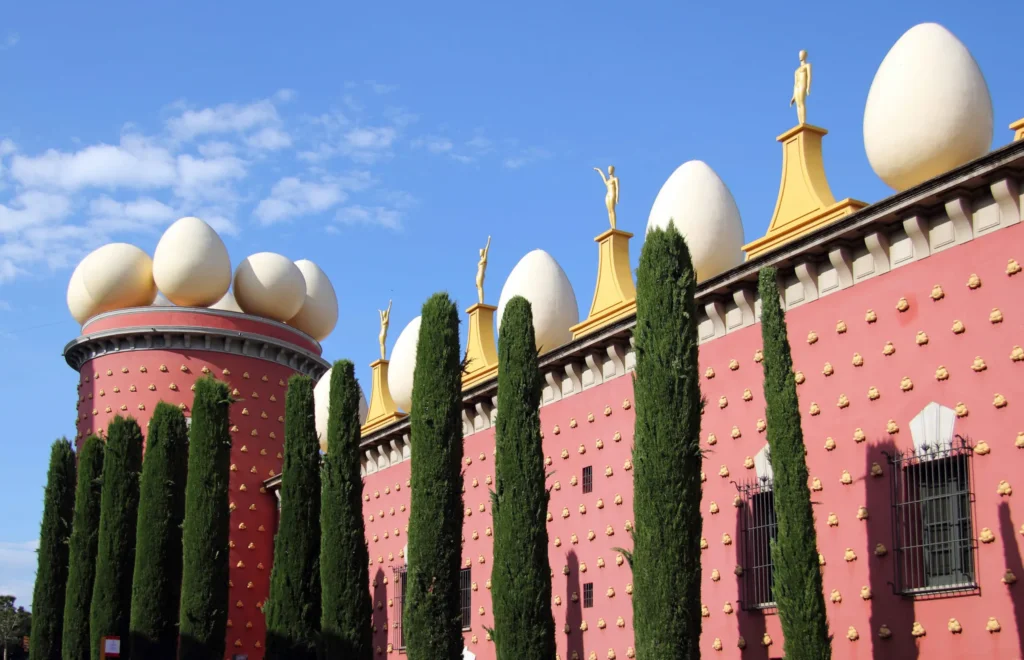
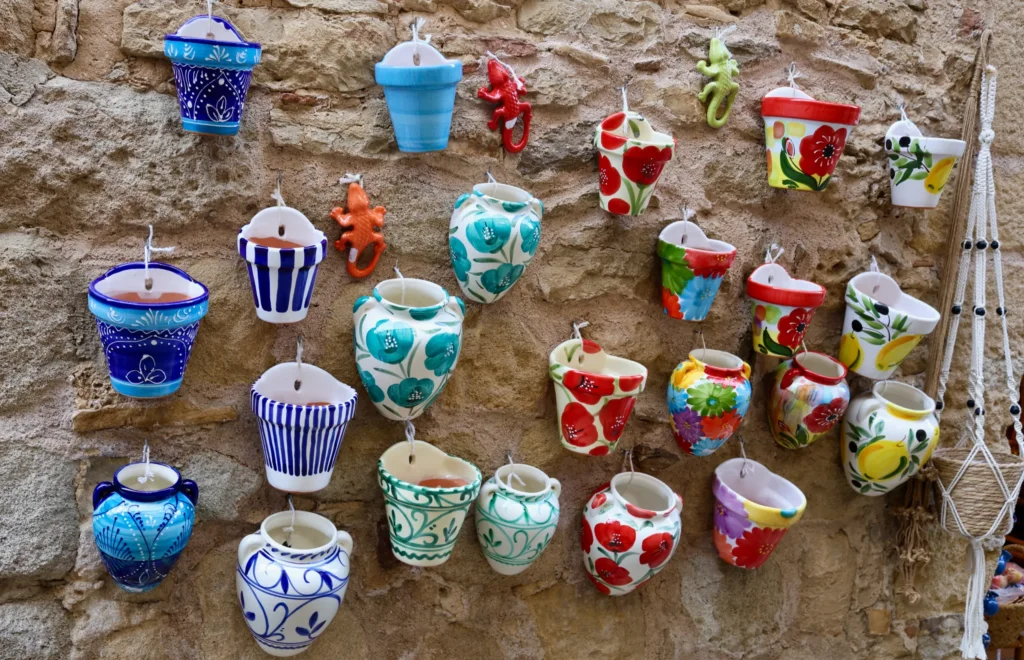
From Peratallada, we also strike out for the nearby Mediterranean coast, following rural lanes past hilltop villages and farmhouses, some with their own 15th century watchtowers, a legacy of when this coastline was constantly under siege from pirates. This was also why larger towns like Pals, which we pass through en route, evolved in the hinterland, away from the Costa Brava (which means “wild coast”) with its perilous cliffs and coves.
As we drop down to the seaside village of Llafranc, the coastline’s appeal is clear, with a marina full of yachts and fishing boats jiggling on the blue-green Mediterranean, and the sleepy sea lapping an arc of sand, backed by whitewashed cafes and small hotels.
We swim and sunbake here then follow the clifftop path around to neighbouring Callela de Palafrugell, where we score a table outside beachfront restaurant Tragamar, tucking into a long lunch including plump grilled sardines and a divine lobster casserole with rice.
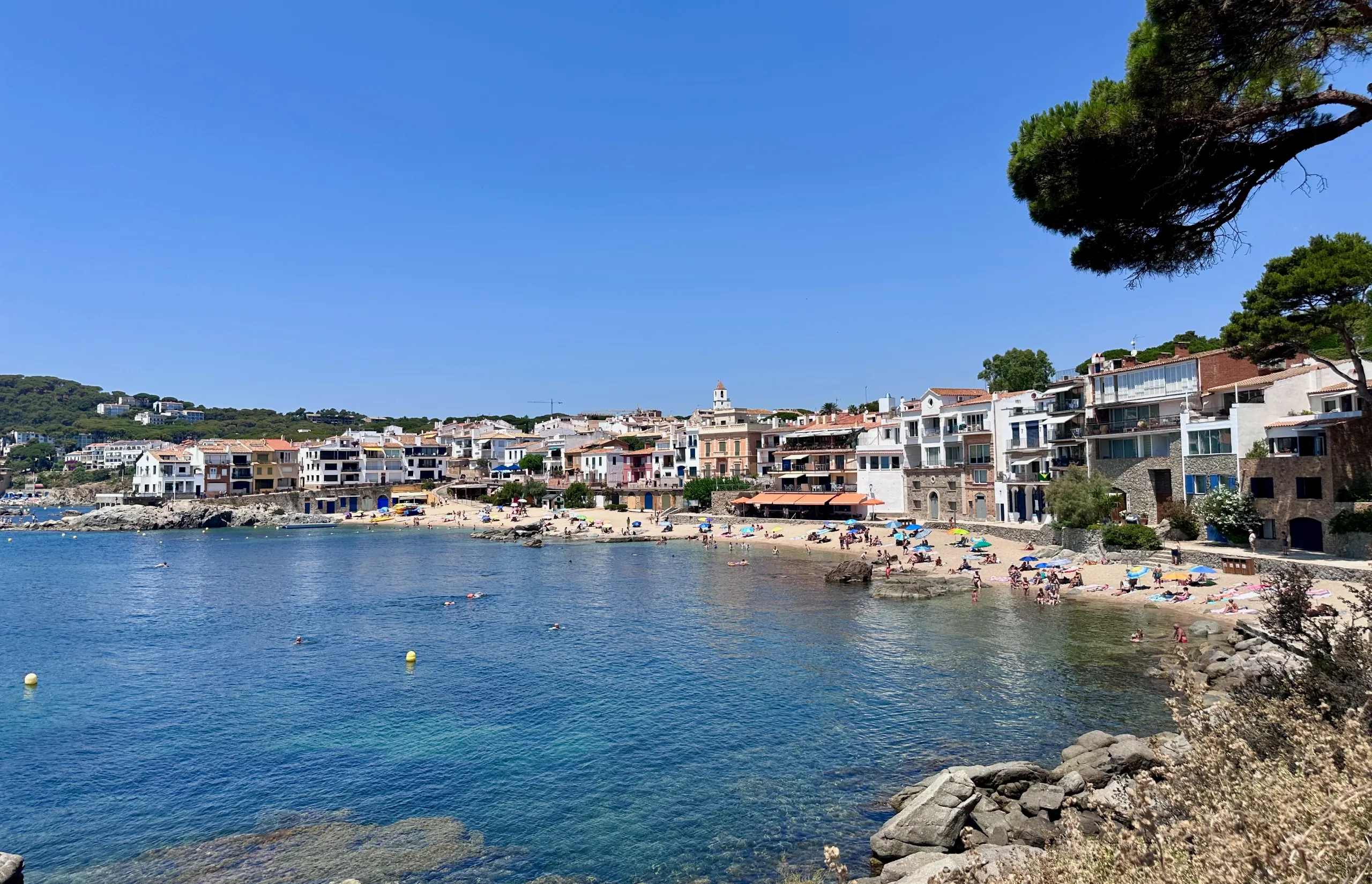
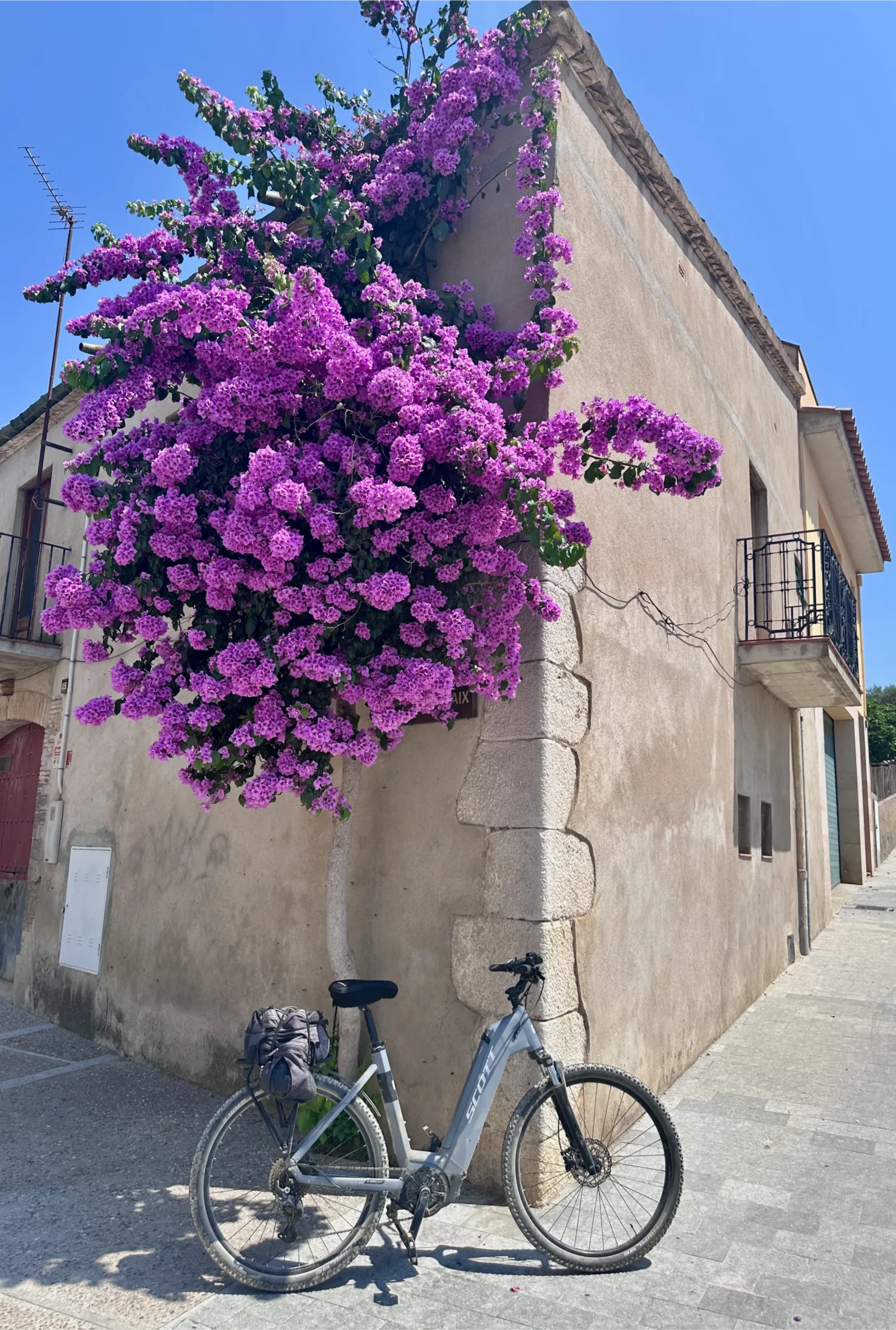
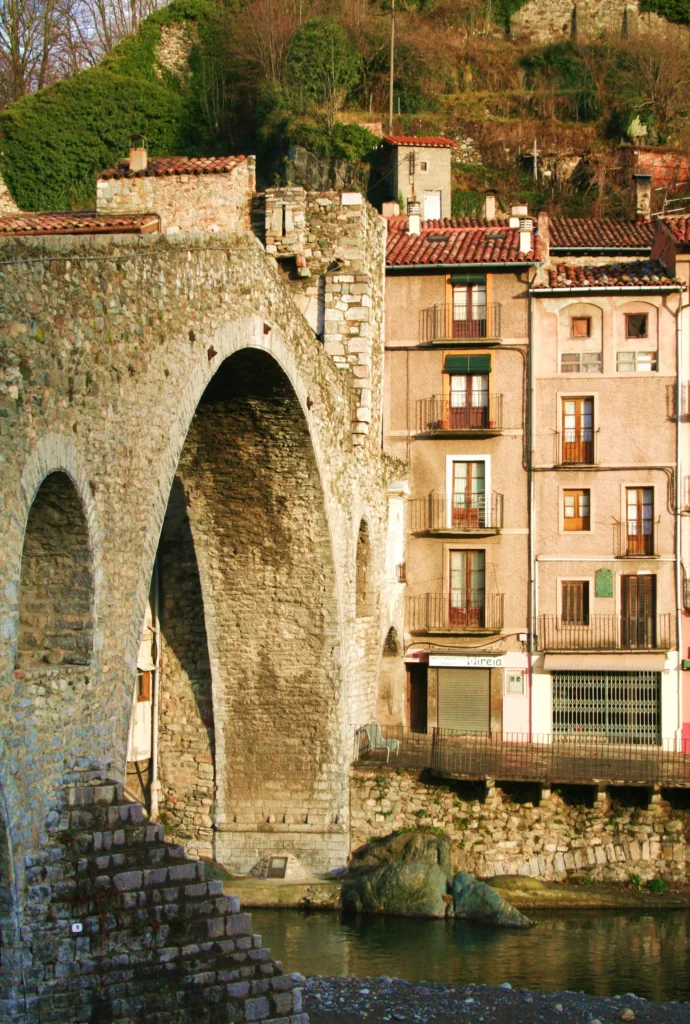
A feast of culture and cuisine
The next day, we forge across the coastal plain once more, passing the Montgri mountain range and reaching the shore, further north, near Empuries, an ancient Greek colony and Roman settlement, dating to 575BC. Walking around these extensive ruins, which overlook the sea, it’s easy to imagine the central Agora and Stoa Square, Empuries’ civic centre and market place, as a hive of Greek politics and commerce in its heyday, and later thriving under the Romans. This was also where wine arrived in this region. An onsite museum, housing a collection of artefacts from both periods, including finely decorated amphoras and bronze objects, bring the picture of this flourishing coastal civilisation further to life.
We finally arrive in the coastal town of San Pere Pescador, at the edge of the Fluvia river in the Alt (Upper) Empordà region, where we will spend our last two nights of this memorable cycling journey. It’s an opportunity to add some relaxation to our cycling adventure, with the town’s seven kilometre long beach, on the Bay of Roses, a short ride away. We reach it via a riverside trail threading through the wetlands of the Aiguamolls de l’Empordà Nature Park, spotting water birds like spoonbills and white storks along the way.
The short ride is particularly sublime in the evenings, as we return from sipping mojitos and dining on seafood tapas at Chiringito Che beach-shack. With the sun setting in a haze of pinks and purples across the delta, amplified by the Fluvia River, we are serenaded by a chorus of whoops, chirps and whistles emanating from the waterside reeds.
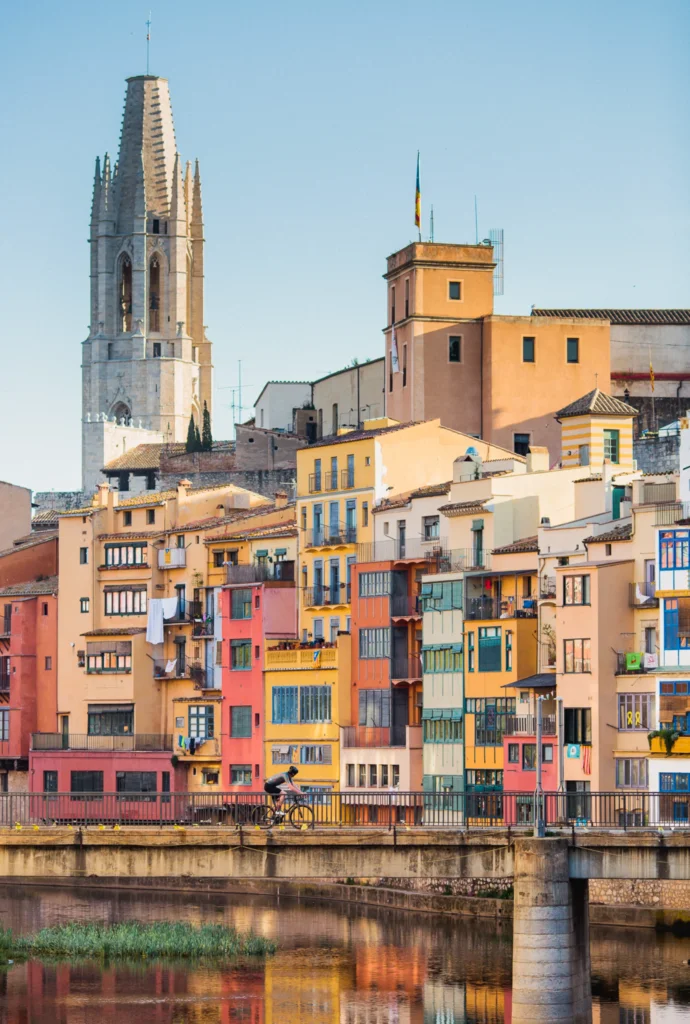
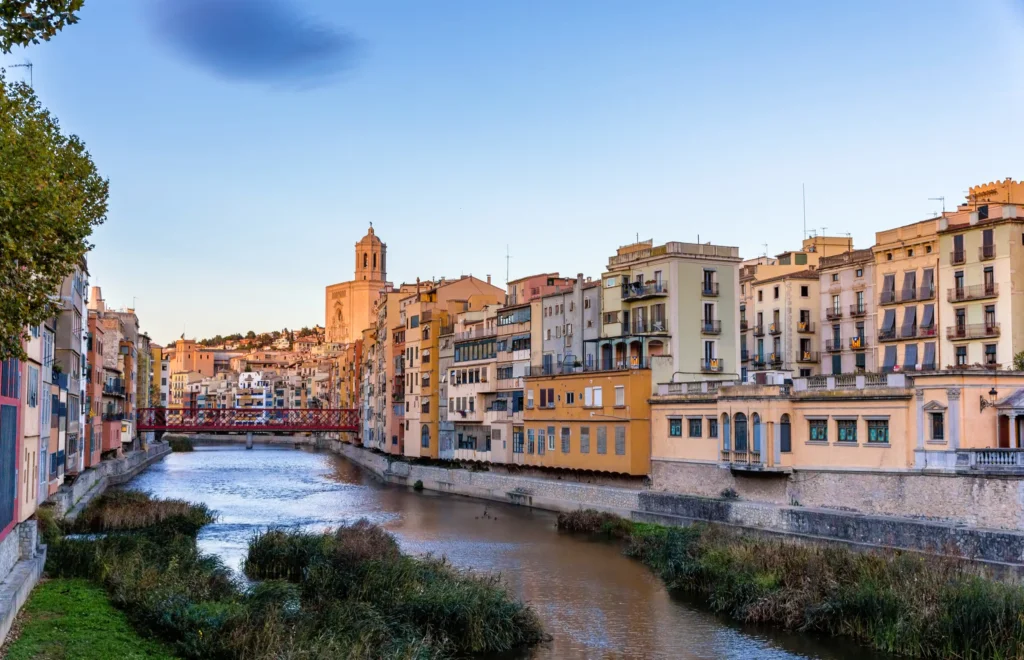
View of the embankment in Girona
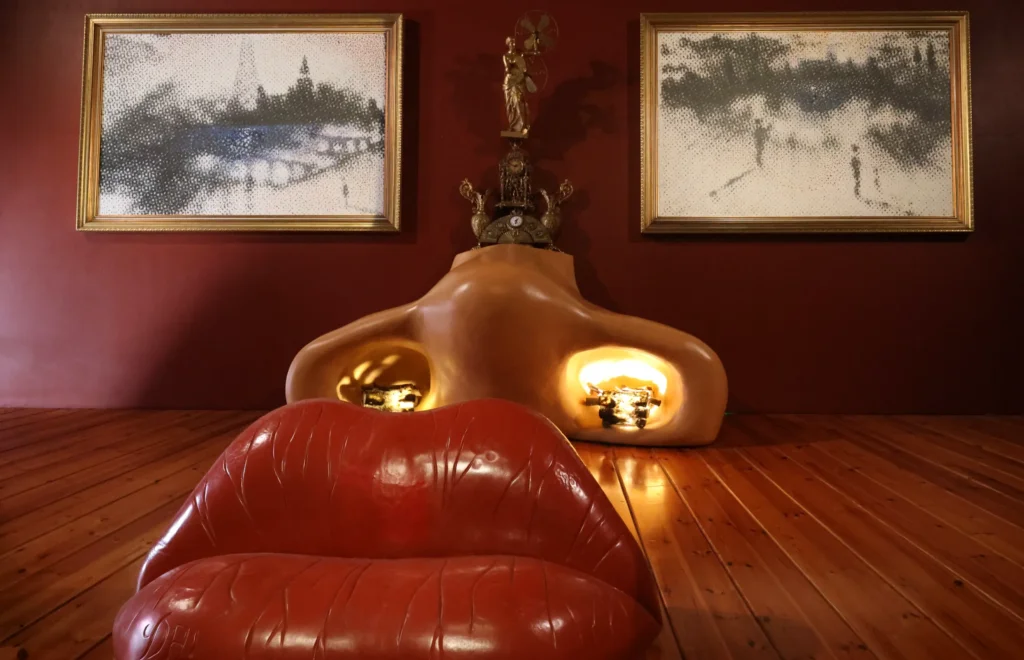
The art of slow travel
The seaside here is so beguiling that it’s tempting not to set off on our final day’s ride, a 53 kilometre loop to Figures, but it turns out to be an unmissable treat. First, there is the journey itself, past olive groves, orchards full of juicy apples and through an ocean of vivid yellow sunflowers, interspersed by rests in sunglazed hamlets, their empty alleyways festooned with small explosions of mauve and burgundy flowers.
Then there is Figures itself, with its strong connections with Salvador Dalí, including the house where he was born and his last great creation, the extraordinary Theatre Museum, which houses the world’s largest collection of his work. This is a sumptuous feast for the eyes, from its vermillion exterior walls featuring rows of sculpted bread rolls, topped by giant eggs, through the giant glass dome above it, that appears like a fly’s eye, to all the whacky surrealist installations inside.
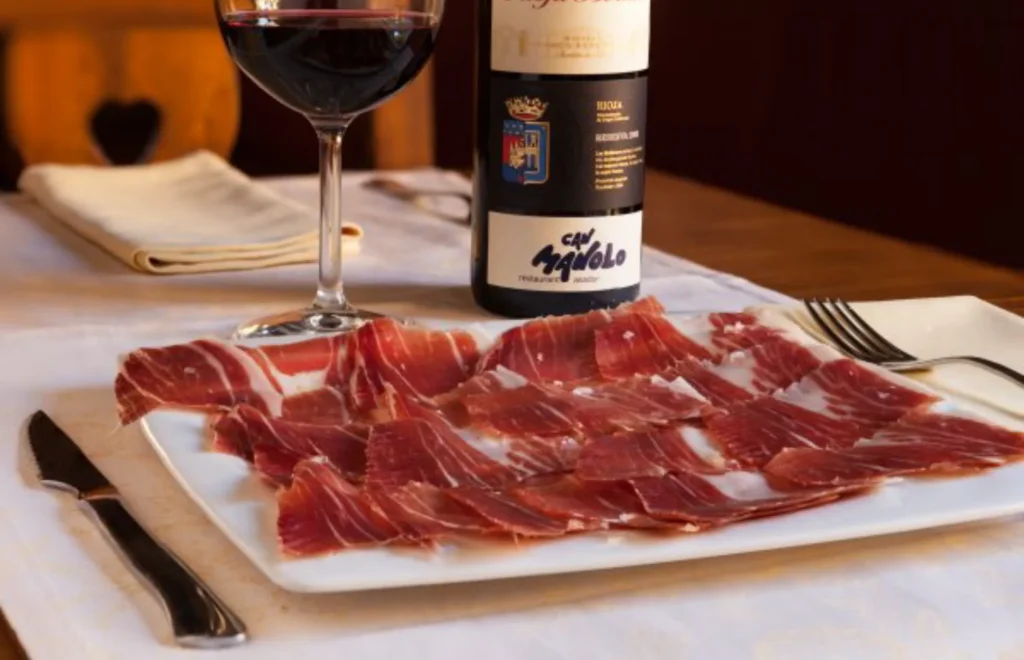
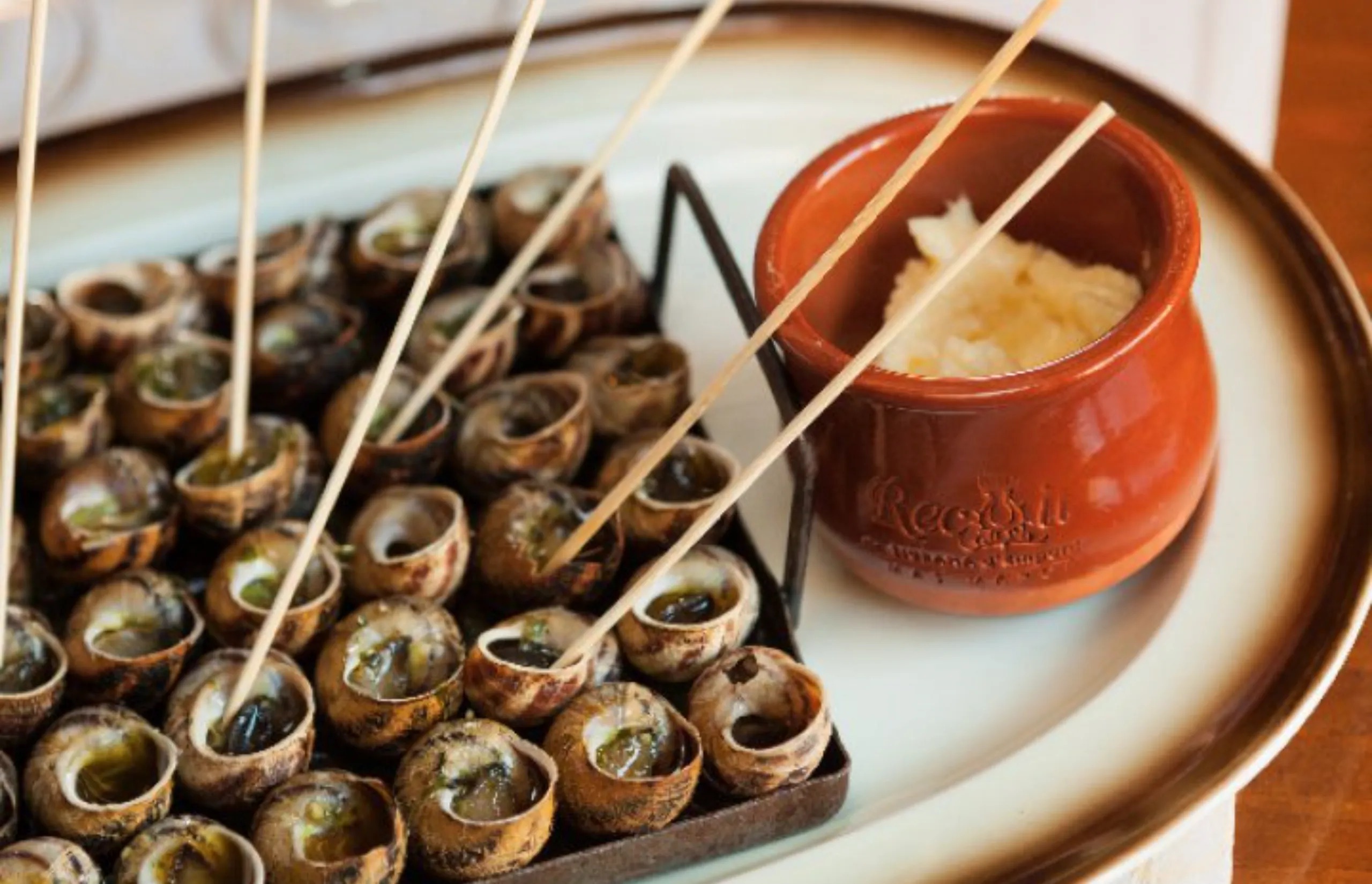
Unforgettable amongst these are an upside-down boat perched atop of a tall column in the inner courtyard and the Mae West room, where Dali recreated the movie star’s face using furniture, including his famous red-lips couch, only becoming clear when viewed through a prism at the top of some steps.
This exuberant tour-de-force is a fitting last stop in a journey that has brought a wider, more resonant appreciation of Catalan culture and cuisine, beyond its compelling capital, Barcelona. From 6th century Greek ruins to spellbinding medieval villages like Peratallada, dense forests and farmlands in the Costa Brava hinterland to sampling delectable food and wine, this slow travel adventure has brought us up close and personal with one of the world’s great gastronomic regions.
Journey notes
UTracks’ ‘Catalonia by Bike’ tour costs $2490 per person, including seven nights’ accommodation, breakfast, luggage transfer, a 21-speed bike, and route navigation app. Upgrade to an e-bike for $300 per person.
DO Empordà Wine Route: www.doemporda.cat/en/do-emporda-wine-route.html
Hotel Arcs de Monells/Monki restaurant: hotelarcsmonells.com/en/
Salvador Dalí Theatre Museum: salvador-dali.org/en/visit/dali-theatre-museum/
Latest Articles
Don't miss the latest from Luxury Travel
